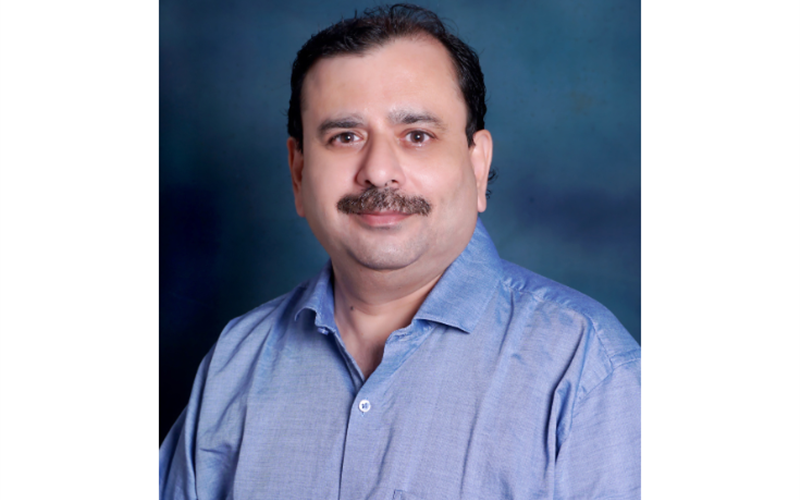Akshay Vijay Joshi: The curriculum should be designed in consultation with industry experts
It should take into consideration the learning skills necessary for their future careers and enhance the employability of the students, says Dr Akshay Vijay Joshi, faculty, Printing Engineering Department, PVG’s College of Engineering and Technology & GK Pate (Wani) Institute of Management, Pune in the Print Guru series.
09 Jan 2024 | By PrintWeek Team
What is the USP of the print and packaging industry in India?
India's print and packaging industry serves both domestic and international markets. The industry is investing in modern printing and packaging technologies and adapting to digital transformation to meet the unique packaging needs of food and beverages, pharmaceuticals, cosmetics, health and hygiene, electronics, etc. With growing awareness of environmental concerns, the industry is marching towards sustainable practices, adhering to international quality and standards.
As an educator, what have been the three biggest problems you have faced?
One, investment in equipment, and machinery, two, developing a skilled workforce for the industry, and three, job placements with attractive salary packages for the students so that they retain and serve the printing and packaging industry.
How do you think these obstacles could be tackled creatively?
Live industry projects and collaborative projects will help students gain hands-on experience in equipment and material handling and exposure to industry practices. This will help not only the students but also the teachers to update with the latest technological developments. The strong industry connection through live projects and internships shall increase the chances of securing attractive job placements for the students. The curriculum should be designed in consultation with industry experts taking into consideration the learning skills necessary for their future careers and enhancing the employability of the students.
Encouraging the students to participate in national and international competitions, guest lectures, webinars, conferences, industrial visits, and exhibitions shall develop their interest in the printing and packaging field. The online courses and interdisciplinary audit courses shall improve critical thinking skills that extend beyond their core domain. Recently, we have offered an honours course in advanced packaging technology in addition to the Bachelor’s degree in printing technology. The course includes subjects such as IoT, smart packaging, and sustainable packaging to widen the learning gamut to prepare the students for emerging trends and technologies.
Which is your favourite subject and why is it important?
Gravure printing, flexography printing, and packaging. The Indian flexible packaging market size is estimated to grow at a CAGR of 12.60% during the forecast period from 2023 to 2028. The changing consumer preferences, and increased demand for packaged products for the FMCG sectors, such as food and beverages, healthcare and pharmaceuticals, household care, personal care and cosmetics, tobacco, and industrial products have offered the biggest opportunity for the flexible packaging industry. Gravure and flexography are the dominant printing processes to cater to the demands of flexible packaging.
Therefore, it is necessary that students learn these printing process parameters, material selection, and ink-substrate interactions, and develop problem-solving skills. The print calibration techniques, quality analysis, and exposure to package testing, traditional and sustainable packaging shall open a wide range of career opportunities for the students.
Today, you are a teacher. Who was your guru, and why so?
I attribute my choice to become an educator to Dr GS Koshe, my guru, whose unwavering commitment to teaching, sharing knowledge, and effective communication ignited my own passion for the field.
One innovation you implemented after listening to your student?
A gravure cum flexo machine was successfully constructed as part of the final year student’s project under my guidance at PVG’s COET & GKP(W)IM, Pune. The machine continues to be actively employed for practical training and project work.
Were you the minister of printing and packaging, how would you tackle the industry's problems creatively?
Establish training centres and foster strategic partnerships between educational institutions and industry to upskill the workforce to fulfil the demands of the printing and packaging industry. Enforce quality control measures to ensure the compliance of Indian packaging and printing products meet global standards. Encourage industry associations to focus projects on circular economy. Financial support programmes for the printing and packaging sector to encourage innovation and sustainable practices.
What ingredient do you seek among your young disciples?
The qualities that I seek among young disciples include keen observation, adapting to new technology, computer skills, analytical skills, problem-solving skills, cost estimation, strong time management, effective communication skills, and customer relations.
An article/listing in a publication that impressed you?
Sharma, A and Seymour, J (2019). Evaluation of expanded gamut software solutions for spot color reproduction. Color Research and Application, Vol. 45 (2), 1-10. DOI: 10.1002/col.22471.
Your present preoccupation in the field of research?
Sustainability in printing.
One project you are excited about?
Implementation of expanded colour gamut in gravure.
Assuming you can align with a print or packaging association, what would be the three most important things you would expect from it?
One, funded Research Projects. Two, support for infrastructure development. Three, availability of resources.
The industry needs skilled professionals on the shopfloor, and different printing education institutes have been churning out printing professionals for decades now. Still, there seems to be a disconnect between industry and academia. Why? What do print teachers want from the industry? Read more in this series where PrintWeek asks 13 print gurus.












 See All
See All